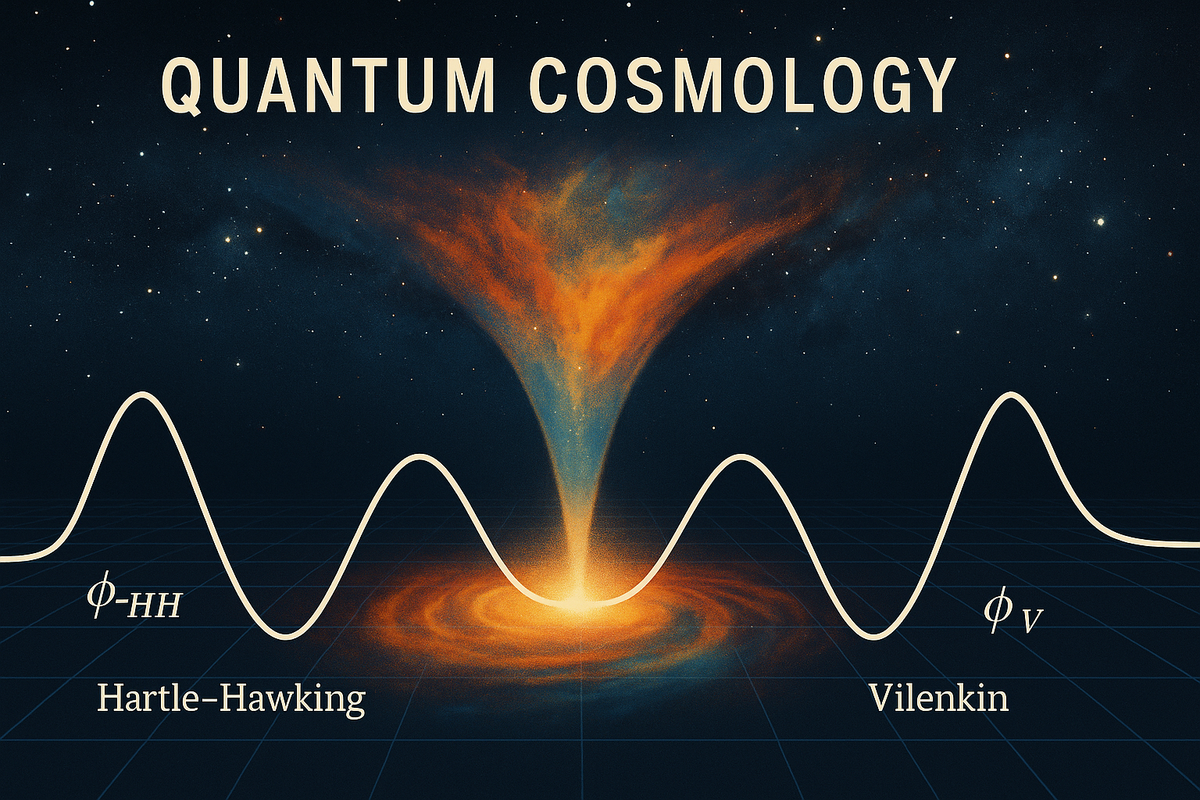Quantum Cosmology

Quantum cosmology is the study of the universe as a quantum system — an attempt to apply the principles of quantum mechanics, which govern atoms and particles, to the entire cosmos.
Ordinary cosmology explains how the universe expands and evolves according to Einstein’s general relativity. But relativity breaks down at the earliest moments of the Big Bang, where the universe’s size and energy were so extreme that quantum effects cannot be ignored.
Quantum cosmology then asks: What is the wavefunction of the universe? — that is, what quantum state describes the geometry of space and the matter within it?
In classical physics, we describe the universe by its metric — the shape and size of spacetime. In quantum cosmology, that geometry itself fluctuates, much like an electron’s position does in quantum theory. The basic object is a path integral over all possible geometries: one sums over every possible spacetime that could exist, weighting each by a quantum amplitude. The result is a “wavefunction of the universe,” which predicts the probability of different cosmic configurations.
Because the theory deals with the whole universe, it has no external observer and no external time. One of its central questions is therefore: What boundary conditions determine the universe’s quantum state? Two famous answers are the Hartle–Hawking “no-boundary” proposal, in which the universe smoothly closes off in imaginary time like the surface of a sphere (so there is no beginning edge), and the Vilenkin “tunneling” proposal, in which the universe quantum-tunnels from nothing into expansion.
Each proposal specifies how to integrate over geometries — how to choose the contour of the path integral — and leads to different physical predictions for inflation and cosmic structure.
Modern work in quantum cosmology often connects these ideas to deeper symmetries: holography, CPT (time-reversal) invariance, and dualities between small and large scales. These approaches seek to show that the right boundary condition might not be imposed by hand but could follow naturally from the symmetries of the gravitational path integral itself. The ultimate goal is a self-consistent quantum description of how space, time, and the laws of physics emerged from nothing.
Our recent paper “Reflection Symmetry and Self-Duality in Quantum Cosmology” shows that the universe’s quantum boundary conditions need not be imposed from outside but arise naturally from an internal symmetry of the gravitational path integral. By revealing a hidden reflection that exchanges large and small scales, it unifies the so-called Hartle–Hawking no-boundary and Vilenkin "tunneling" proposals as two complementary faces of a single self-dual structure. This symmetry obeys the same mathematical relations as modular forms and L-functions, linking quantum cosmology to deep patterns in number theory and suggesting that the universe’s beginning is governed by balance, not by boundary.